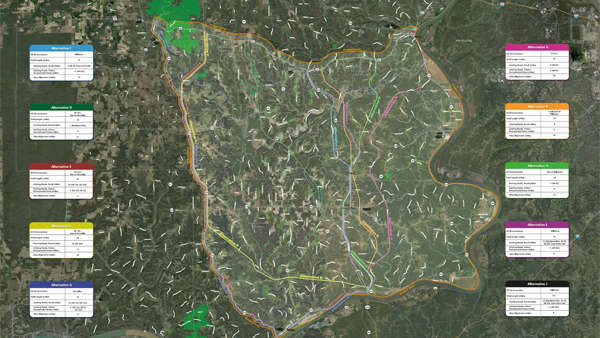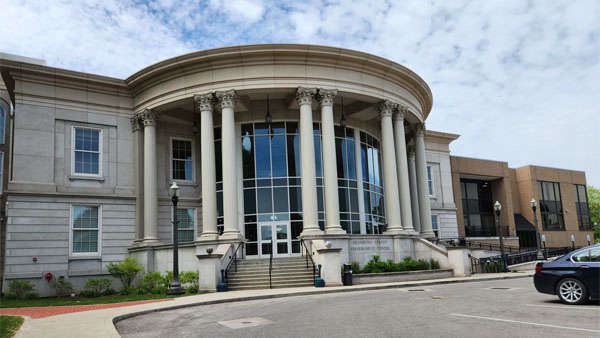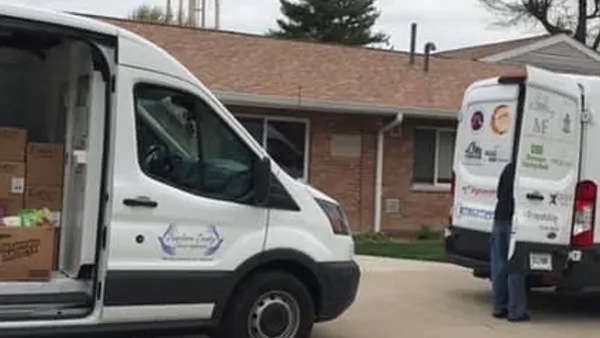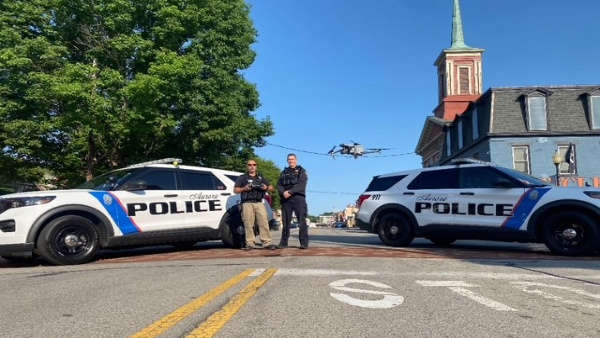Ten alternatives are being considered for a new link between Markland Dam and U.S. 50.

Ten alternatives are being considered for a new link between Markland Dam and U.S. 50. File photo.
The Indiana Department of Transportation (INDOT) has announced plans to build a new highway connecting State Route 101 at Markland Dam to U.S. Route 50. Currently, the project known as “Link 101” is in the preliminary alternatives stage, in which INDOT is considering ten alternatives for the new north-south corridor. Residents and landowners throughout Dearborn, Ripley, Ohio, and Switzerland counties have joined together to form an organization in response to this proposed two-lane highway, referred to as ‘Stop Link 101.’ The group states that this project will bring about profound and unwanted change to this region: permanently altering the landscape and rural lifestyles of hundreds, if not thousands, costing taxpayers hundreds of millions, and needlessly destroying the environment.
Following Governor Holcomb’s 2021 announcement that funds were being made available for a NEPA (National Environmental Policy Act) study concerning the Route 101 extension, INDOT awarded a contract to Parsons Corporation. Knowing that public support is critical for the roadway to be built, Parsons has gone to extraordinary lengths to carefully frame this project in terms that are most appealing to the local people. They have described its purpose in gentle terms such as “improved connectivity” and “improved safety.” However, these euphemisms disguise the true purpose and scope of this project. Indeed, Link 101 is not being built for these measures alone. Instead, it will be a “super-two highway” corridor designed primarily to move freight. It will dissect family farms and transform small towns throughout southeast Indiana as it diverts thousands of vehicles and freight away from Cincinnati and through the heart of our communities, particularly Dearborn, Ohio, Switzerland, and potentially Ripley County. It will truly be transformative and destructive in every aspect imaginable. For these and other reasons described below, thousands are now speaking out in opposition to this project and are demanding INDOT to suspend all operations in favor of the “no-build” option.
This new roadway will fundamentally change this region. According to a leading proponent of the highway—former Indiana State Representative Randy Frye—this highway is envisioned as being part of an interstate network for freight to by-pass Cincinnati and I-275 altogether, so that “travelers [and] trucks, would not have to go anywhere near Cincinnati, Erlanger, Florence, [or] all of that airport traffic…” He also stated that the “completed road would open up and transform the area… it will bring everything from fuel stops, stores, hotels, industry, housing…” Governor Eric Holcomb, himself, echoed this sentiment, noting that this route will ultimately provide a “direct connection…to both 1-71 and I-74 and offer a new cross-river route for freight traffic through Southeast Indiana.” Clearly, the primary purpose of Link 101 is not intended to meet the needs of the local communities but to serve outside interests.
While only a small handful of bureaucrats support this highway, most of the residents are opposed. Many see this project for what it really is: a top-down project catering to special interests and opportunistic government insiders. As a matter of fact, the idea for this highway never originated locally, nor has it been popular here. Rather, the people of southeast Indiana have for decades vehemently opposed any new terrain corridor. Almost twenty years ago, the very same project coined under the name “State Route 101 Corridor Improvement” was overwhelmingly rejected by the local people, county commissioners, and state representatives. Now, the project has returned under its new name, “Link 101,” yet, it is still fundamentally the same proposal that was fiercely opposed back then. Today, opposition remains just as strong. The vigor of the opposition is particularly evident from the public comments that were submitted to INDOT after the first January 2023 meeting in Dillsboro. An analysis of the data reveals that an overwhelming majority still oppose this new roadway. Specifically, of the hundreds of comments received, 83.2% were outright opposed to the project, 3.1 percent stated concerns, 5.1 percent had no opinion, and only 8.6 percent were in favor.
From these results, it is abundantly clear that the people of southeast Indiana do not want this highway. And they are rejecting it for good reason: the gravity of this project on the community and the surrounding landscape will be profound, irreparable, and will adversely impact every fabric of our community. Multigenerational family farms will be lost, the rural character of this region will be threatened by urbanization and unsightly development, commercial traffic will flood our small towns, historical sites and fragile ecosystems will be destroyed, local businesses may be driven out by large conglomerates, and the touted benefits of the highway will likely be unrealized, if not missed entirely. Moreover, in a much broader sense, this multi-million-dollar project belies all fiscal and social responsibility on a grand scale.
Based on 2018 estimates, the State is suggesting an obscene sum for this project—approximately $200,000,000.00 —a figure that, while staggering in and of itself, likely underestimates the total cost that will be needed to complete this project, especially when considering the challenging terrain of the region and the ever-rising costs of goods and services. And yet, despite the exorbitant costs, the new highway delivers so little in terms of benefits. Compared to the current fastest and most direct route from Markland to US 50, the new highway will shave a mere 5.5 miles in total distance and result in a 15-minute shorter commute time according to the Link 101 project team. Stated differently, the state is going to pay at least 36.36 million dollars for each mile reduced and 13.33 million for each minute saved—all for a road that only a fraction of the local population will use on a daily basis.
The ongoing future maintenance costs that will stem from this project will be crippling. According to a study done by Transportation for America, a new lane-mile in the United States cost an average of $24,000.00 annually to maintain in 2019. Thus, a two-lane, twenty-mile highway like the new State Route 101 will cost close to 1 million a year to maintain. Not only will residents have to pay for the initial cost of this new highway, but the region will be straddled with the ever-increasing financial burden of the maintenance requirements needed for this highway on top of existing infrastructure. As resources invariably get spread thin, existing roads will likely deteriorate and transportation throughout the region will suffer. This isn’t just theoretical; it is already happening. According to a report by Transportation for America, the total percentage of roads deemed to be in “poor” condition throughout Indiana increased from 10 to 13 percent from 2009 to 2017. Clearly, the State of Indiana has already proven it can’t reliably maintain its current infrastructure. As the backlog of roads in decline increases, the only way it can be fixed is asking the public to pay for it. For local communities, that means higher taxes and increases in the costs of living.
Clearly, INDOT has sorely misplaced its priorities. It is irresponsible to build new roads like Link 101 when so many local and state routes are in poor condition and local communities can’t even afford to maintain the roads they have. Undoubtedly, this region simply cannot afford this highway. More importantly, the people here do not want or need it. The area already has infrastructure in place that, if maintained and improved upon, could produce most of the same results that INDOT argues a new highway would deliver. Notably, these benefits would be achieved without causing nearly the degree of undesirable social, fiscal, and environmental consequences that a new highway would bring.
In many respects, Link 101 represents more than just another roadway improvement project. It represents a threat to the very character of this rural community and the values and aspirations of its people. Whether it be landowners, small-town residents, or families trying to plant their roots across this region, Link 101 poses a fundamental threat to everyone’s way of life. The struggle for which this community is now engaged will be a test of its values—a test that will ultimately determine the kind of future that this community will pass down to its children and grandchildren.
To learn more about how to voice your concerns regarding Link 101, readers can visit the Stop Link 101 website at: https://stoplink101.com.

 Dearborn County Comprehensive Plan Public Workshop Planned for July 24
Dearborn County Comprehensive Plan Public Workshop Planned for July 24
 4th of July Celebrations in Eagle Country
4th of July Celebrations in Eagle Country
 Dearborn Co. 4-H, Clearinghouse Teaming to Fill the Van
Dearborn Co. 4-H, Clearinghouse Teaming to Fill the Van
 Former Washington Township Trustee Arrested for Theft and Official Misconduct
Former Washington Township Trustee Arrested for Theft and Official Misconduct
 Aurora Police Launch New Drone Program
Aurora Police Launch New Drone Program
 Prepping Future Chefs at Science Behind Cooking Camp
Prepping Future Chefs at Science Behind Cooking Camp













